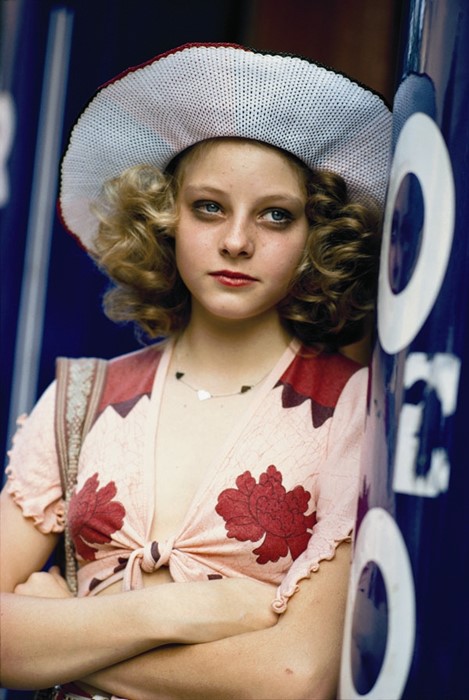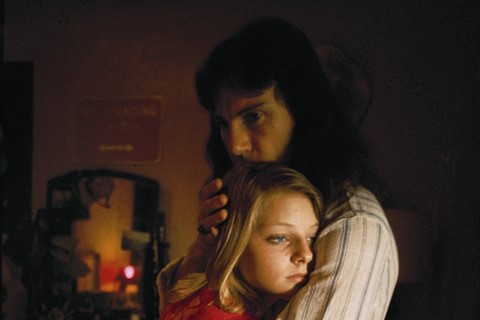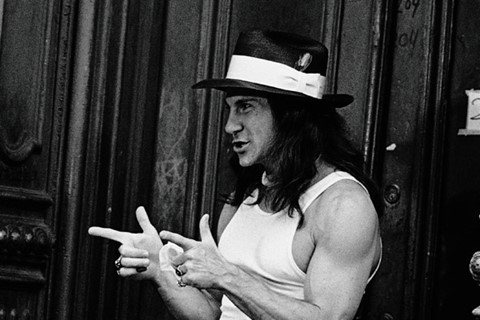In collaboration with Taschen Books, acclaimed photographer Steve Schapiro presents a series of unseen images taken on set of the seminal film, Taxi Driver. Beginning in 1961 Shapiro worked as a photojournalist for the likes of Vanity Fair, Rolling
In collaboration with Taschen Books, acclaimed photographer Steve Schapiro presents a series of unseen images taken on set of the seminal film Taxi Driver, the exhilarating story of a mentally unstable Vietnam veteran who works as a night-shift taxi driver in New York. Beginning in 1961 Schapiro worked as a photojournalist for the likes of Vanity Fair, Rolling Stone, Life and Time. An activist as well as a documentarian, Schapiro covered many stories related to civil rights before shifting his attention to film. Working with major motion picture companies and prestigious actors, he has produced publicity stills and posters for films that range from The Godfather to Rambo, as well as capturing iconic images of the likes of Andy Warhol, Martin Luther King Jr., Robert Kennedy and Jacqueline Kennedy Onassis. With Taxi Driver, Schapiro offers behind the scenes and on set images of director Martin Scorsese, Jodie Foster and Robert De Niro in the role that propelled him into a star. Schapiro’s new book offers a narrative that stretches far beyond the film and stands as a pure photo book in its own right. Featuring 100s of images selected from his archives, they capture the energy, anger and vigour with the most chilling and captivating results. Here we speak to the man himself about being a quiet fly on the wall, working with Bobby De Niro and capturing “the moment”.
How did you get involved in photographing on the set of Taxi Driver?
I had great success working for magazines. So, as a special photographer, I was hired on films because besides taking good photographs, I was able to place those photographs in major magazines. Having worked with Robert De Niro on The Gang That Couldn't Shoot Straight and The Godfather Part 2 he felt comfortable with having me on the set.
You have worked as a photojournalist at a variety of events, what do you find most intriguing about working on film sets?
Let's start with the least intriguing part of film sets. The waiting around. Particularly in the 70s, the change in lighting took forever and then there was the blocking for camera positions and rehearsals. Usually there was a good hour between setups, where you were just standing around.
I have done a great deal of documentary photography covering the Civil Rights movement in America, social events such as Migrant Workers, Haight Ashbury, politics and historical events. I don’t find a great difference between how you shoot documentary situations or film situations. With regard to films however, if you have read the script you are usually not surprised at what is about to happen. A good photograph has emotion, design and information. If you succeed in showing those elements you are doing well whether it is in the real world or the film world. As a photographer you are looking for, and hoping to take, iconic images in whatever setting you happen to be in.
Can you describe the experience of working on the Taxi Driver set?
On Taxi Driver I was fortunate to be working on an emotional and highly graphic visual film with Martin Scorsese, a great director who maintained and translated the emotions of the script. The actors were at the forefront of their careers. At times the tension of the script and the situation of translating it into film, caused a strong sense of tension on the set, but that was because the actors maintained the intensity of the characters they were portraying.
What insight do you feel your images give the viewer that the film alone does not?
I think my photographs for Taxi Driver are not simply there to be reminiscent of the film. In the book I did on the Godfather, The Godfather Family Album the book brings back a sense of nostalgia for a film trilogy we all love and for the iconic still images we remember. For Taxi Driver I was able to convince Taschen to let the images flow right through the book without the interruption of captions or text pieces, and with the interviews placed at the back of the book, creating an uninterrupted emotional flow for the viewer. Many of the photographs are there just because they are good photographs and heighten the overall mood rather than necessarily continuing the specifics of the movie story.
How involved did you become in the film?
I am always involved with “the moment” before me. Sometimes I am merely a quiet fly on the wall, not wanting to disturb in any way the hope that a great photographic moment is about to occur - a facial expression, an element of intensity or of design may be just around the corner to form that great iconic image.
What challenges did you face?
For films, while they are being shot, the photographer is the low man on the totem pole. Any thing he does, even his presence on the set, can, in some directors' minds have the potential to sap energy from the filming process, distract the actors, make noise at an inopportune moment, etc. Afterward, for the marketing of the film, the photographer and the images he has captured becomes highly in demand. And then, ultimately, years later you may be lucky and have a book like Taxi Driver.
How did you find working with some of the movie industry’s all time greats?
Working with a great actor or director is a collaboration between the two of you, often an unstated collaboration. A unique talent has unique imagination, and often his or her ideas are much better than the photographers. I did the movie poster for the movie Parenthood with Steve Martin.
We worked with “comps” that an art director had drawn up. It was to be an ensemble movie poster with all eight actors in it. I had a set built on a 45 degree angle, I had an adjustable doorway made so everyone could come through it at the same time. I found a large sofa in a second hand shop, so the rest of the cast could be sitting and Steve Martin could be standing in front of them taking their picture… All of these images were eventually used. But while with Steve Martin in his trailer, he said "Well why don't I just hold two of the kids upside down."
That became the poster, and similar images have been used forever by other film companies, time and time again, copying his idea.
On the other hand, often an actor who has played many great roles, when confronted by the still camera, is not quite sure who he himself really is or what his true self image should be… It is often easier for an actor to creep into a character's skin then to reveal himself or to figure out what visual image is really his own when not playing a role.
What were the tell tale signs that the young Jodie Foster was destined to be a star?
Just look at the photographs of Jodie in the Taxi Driver book and tell me that she looks like a 12 year old kid, which she happened to be at the time.
The majority of the photographs included in the book are unseen images, why did you decide now was the time to publish them now?
What Taschen brings to a book in production value is amazing. The interviews and editing that Paul Duncan brings to a book is equally amazing. Read the Playboy interview with Bobby DeNiro and you will see what I mean. It is just hilarious. I could not be more happy that I waited these years to do this book with Taschen and I don't think any other publisher could bring so much thought and care to it.
If you had to choose one image to sum up the Taxi Driver which one would it be and why?
If you had to choose one image to sum up The Godfather you would of course choose either Bonasera whispering in Brando's ear or Brando with the Cat. For Taxi Driver it would have to be Travis with the bloody finger to his head, as if he were shooting himself. Sometimes you cannot express in words why an iconic image is an iconic image. It just emotionally gets to you. Let's leave it at that.
What are you working on at the moment?
I am finishing two books. One is a Portrait book, but not a conventional Portrait book with everyone staring out at you. I am also doing a book of color photography that is not related to film or documentary studies.
Text by Lucia Davies
Taxi Driver by Steve Schapiro, with includes a forward from Martin Scorsese, is published on 29th October by Taschen Books. The book launch will take place on 8th November at the Taschen store, Duke of York Square, with a guest appearance from Steve Schapiro who he will be doing a Q&A and signings with Editor Paul Duncan.



